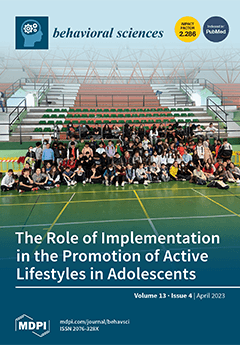Open AccessCommunication
Increased Depression and the Worsening of Depressive Symptoms Associated with Physical Inactivity during the COVID-19 Pandemic: A Two-Phase Cross-Sectional Study
by
Luana Lemos Leão, Weslley Gomes de Araújo Valadares, Nayra Suze Souza e Silva, Stênio Fernando Pimentel Duarte, Alfredo Maurício Batista de Paula, Desirée Sant´Ana Haikal, Sérgio Henrique Sousa Santos, Jeane Soares, Joelton Cruz, Jordana Santos, Gustavo Leal Teixeira and Renato Sobral Monteiro-Junior
Cited by 1 | Viewed by 1080
Abstract
The COVID-19 pandemic has increased the incidence of depression and other mental disorders in the general population, influenced by various individual and contextual factors. Physical activity (PA) interventions offer a promising approach to mitigating the negative mental health effects of the pandemic. This
[...] Read more.
The COVID-19 pandemic has increased the incidence of depression and other mental disorders in the general population, influenced by various individual and contextual factors. Physical activity (PA) interventions offer a promising approach to mitigating the negative mental health effects of the pandemic. This study aims to analyze the association between PA and depressive symptoms. A total of 785 individuals aged 37.4 ± 13.2 years (72.5% female) were evaluated at two different time points: the first between 2018 and 2019, and the second during the COVID-19 pandemic in 2020. Depressive symptoms, demographic, and socioeconomic data were assessed using the Beck Depression Inventory to estimate depressive symptoms. Frequency analysis and binary and multinomial regression were employed for data analysis. The prevalence of mild depressive symptoms increased from 23.1% before the pandemic to 35.1% during the pandemic. Our findings reveal that practicing PA before the pandemic was a protective factor (OR: 0.19; 95% CI: 0.13, 0.30;
p < 0.001) against mild depressive symptoms. Additionally, individuals who continued to practice PA during the pandemic had a lower chance of presenting mild (OR: 0.21; 95% CI: 0.15, 0.30) and moderate/severe (OR: 0.15; 95% CI: 0.08, 0.27) symptoms. Furthermore, our study shows that PA, which was already a protective factor before the pandemic, remained protective during the pandemic, even for those with the highest levels of depression.
Full article






